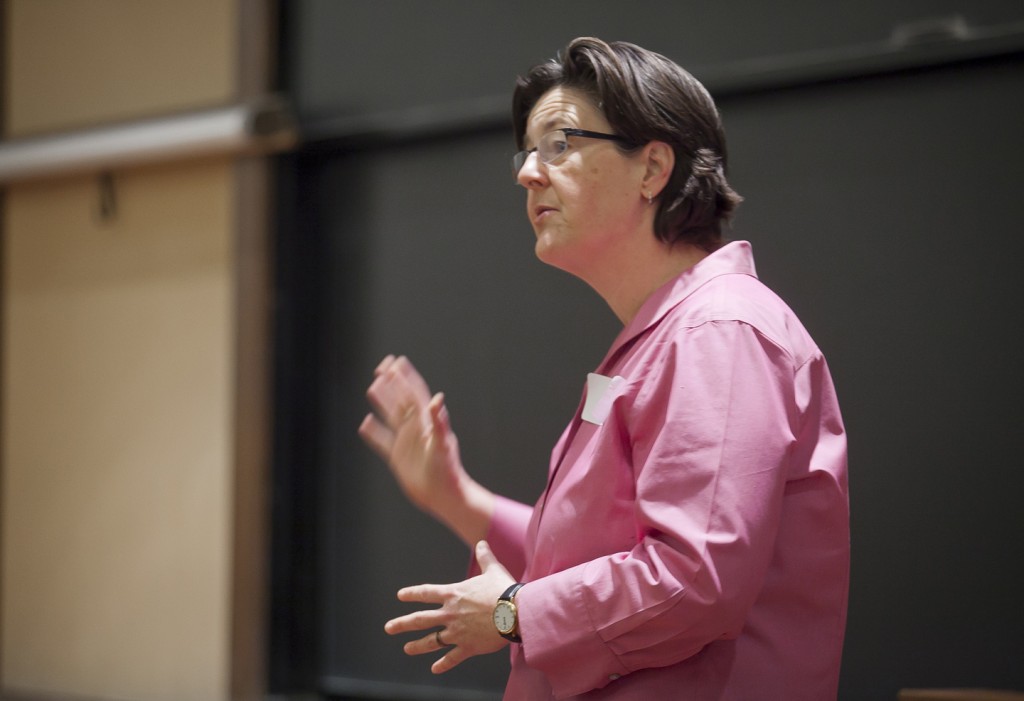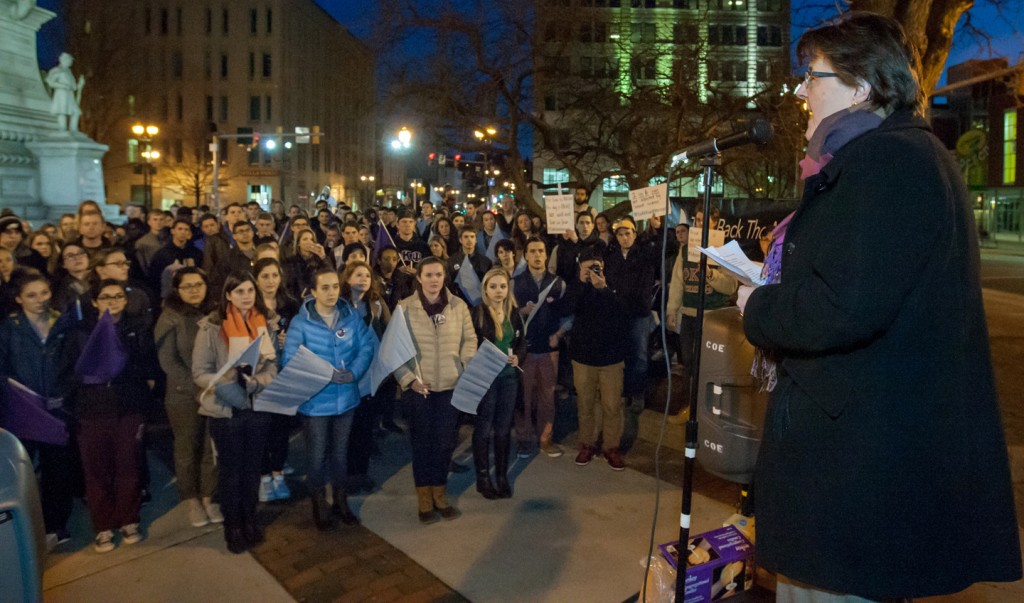Reflections on the 30th Anniversary of Women’s and Gender Studies at Lafayette
Imagine it is 1970 and you are an American woman reading the classifieds, looking for a job. Be careful: “Jobs for Women” and “Jobs for Men” are listed separately. Now imagine that you are thinking about going to college. Hopefully you look great in a swimsuit because in 1970 the biggest source of scholarships for women is the Miss America Pageant. Imagine again, more soberly, that you are not safe at home. You may not have another place to go. In 1970, you can count the number of domestic violence shelters on one hand. And just two more things about 1970: the first women’s studies program in the U.S. was founded at San Diego State and women, for the first time, matriculated at Lafayette College.

Mary Armstrong teaches a course.
From the vantage point of 1970s America, progress on gender issues has been astonishing—and much of that progress has also taken place in higher education. The study of women and gender emerged into the academy with transformative force, changing what is learned and taught, and how it is learned and taught, forever. Today more women’s and gender studies courses are taken nationwide than in any other interdisciplinary field. There are over 900 women’s studies programs in the U.S. offering more than 10,000 courses; 40 institutions in the U.S. offer a master’s degree and 19 of them grant Ph.D.s in the field (NWSA.org). In addition, feminist scholarship and the study of gender continue to change the traditional humanities and social science disciplines, making marks in the natural science and engineering fields, as well.
But if we have indeed “come a long way,” as they say, and both culture and higher education have been so powerfully transformed, why does women’s and gender studies just keep growing? The reason, I’d like to claim, is simply because it has never been more essential. From a big picture perspective, gender is one of the most significant aspects of human life—and one of the most reliable predictors of who will thrive and who will not. Progress has been made, but the truth of the matter is this: in the U.S. and across the globe, women remain less safe, less autonomous, less educated, and less valued. Incredible human potential is wasted. Unnecessary human suffering abounds.
It is in this context that women’s and gender studies takes on gender issues. And we do so intersectionally and complexly. We recognize that the meaning of gender intersects with other aspects of identity such as race, sexual orientation, and ability. Hence women’s and gender studies courses take on lesbian, gay, bisexual, and trans (LGBT) issues, delve into the cultural meanings of masculinity and maleness, and challenge white privilege. They give students the analytical tools needed to understand the systemic causes and effects of sexual assault and sexual harassment, the infamous and intractable “wage gap,” and the media’s mobilization of and dependence upon gender and racial stereotypes. Our courses shed light on important and sometimes unexpected places, as well. For example, we examine the way global climate change affects men and women differently and how environmental degradation will have particularly devastating effects on populations with high levels of vulnerability and fewer resources. And, in the very best tradition of a liberal arts education, our courses are equally crucial for students engaged in the important work of examining and reflecting on their values, their lives and their place in the world.

Mary Armstrong speaks about the personal and society costs of domestic and sexual violence during Take Back the Night.
Preparing students for a global century where they must be the new problem solvers means we must help them develop the tools they need to understand one of the most important variables in human experience. Globally, “women’s issues” change in different cultural contexts. Economically, gender is crucial for understanding markets. Politically, gender echoes through the halls of power. Technologically, gender illuminates who writes code and who gets written off. And it is a topic of vital consideration for every individual who wishes to live an intentional life. In short, any deep thinking—if we want to do it well—needs to take gender into account. It is just not an optional subject in a 21st -century, global curriculum.
Women’s and gender studies has its origins in a movement aimed at changing both society and the academy, and we are rooted in a commitment to the pursuit of justice through knowledge. On its 30th anniversary, Women’s and Gender Studies at Lafayette College has a history of which to be proud. It also has a future that is bright–and very, very necessary.
Mary Armstrong is associate professor of Women’s & Gender Studies and English, and chair of Women’s & Gender Studies.


1 Comment
Congratulations on 30 years! I am so glad Lafayette has such a strong Women and Gender Studies program! I wish I could have taken more WGS classes, and I hope students are really taking advantage of the amazing opportunities they have! Mary, you continue to be invaluable to the Lafayette community! Thanks for this beautiful reflection and all that you do!
Comments are closed.